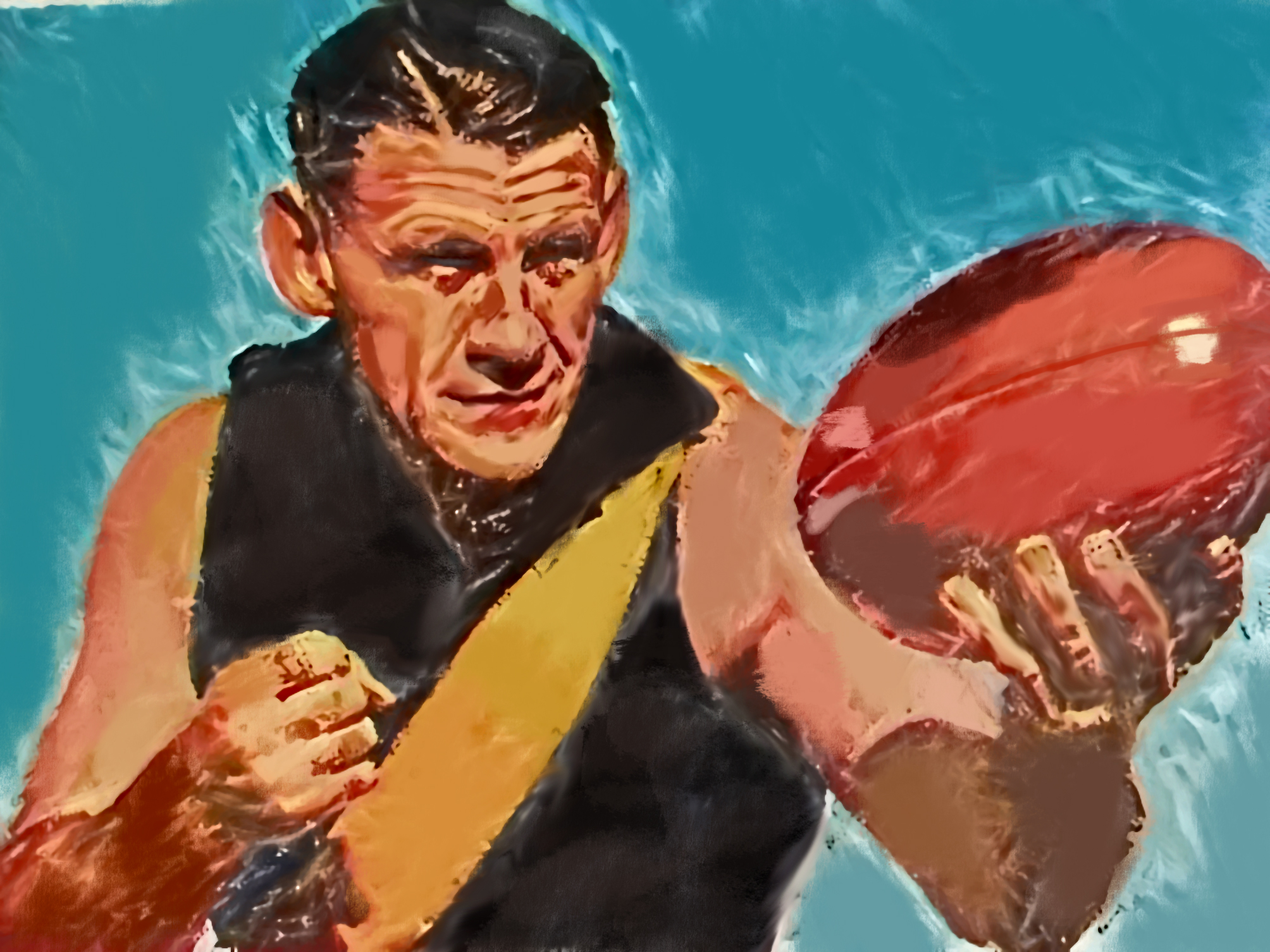CHIP, chip, chip. Backwards, sideways, any way but forwards. GEOFF POULTER has watched the game for many years and wishes we could return to the days when players gave the ball a decent roost:
GATHER around children and listen closely to Old Grandpa Geoffrey as he relates to you a story from days of yore. Once upon a time there was a game called Football, Australian Rules Football to be precise. It was back when the participants of the teams generally did this – they FOOT-ed or KICK-ED an oval ball.
Players jumped for the ball, grabbed it in flight and often kicked it as far as they could manage, the smooth-spinning object propelled long distances. And they were wearing hard-toed, high, ankle-hugging leather boots!
This spectacle had the effect of creating great excitement among the watchers gathered. They became known as spectators and their numbers soon grew to extraordinary proportions.

Alas, this version of the game faded away. It was replaced by a not-so-compelling instalment – a mish-mash of pushing, scragging, wrestling packs of players handing the ball to one another from very close range. Often all 36 players in a small fraction of the total area.
And, on the rare occasions when players did get to kick the ball – like in those days of yore – it was generally performed untidily, softly, haphazardly, indirectly, dangerously. Often in a chipping style. Rarely a long kick with gusto.
Never mind. One is left to lament the change, close one’s eyes and dream of the days when the ball was thumped long distances, sometimes up to half of a ground’s total length. There were a few reminders of the old spiral in last week’s more relaxed Ted Whitten legends charity game.
Jolted to remember some of those fine exponents of the long, long kick, I have assembled a team from the past of long, long kickers.
THE team
B: Wayne Harmes, Ben Graham, Dustin Fletcher.
H-B: Mark Bayes, Ross Glendinning, Jim Jess.
C: Dick Clay, Bill Barrot, Geoff Raines.
H-F: Gary Ablett sen, Bernie Quinlan, Anthony Rocca.
F: Malcolm Blight, Saverio Rocca, Peter Daicos.
R: Cory McKernan, Ted Whitten, Michael Voss.
I-change: Paul Vinar, John Duckworth, Fred Swift, Alan Martello, Darren Bennett, Mark Browning, Ian Robertson, Jon Ballantyne, John Dellamarta.
Ben Graham crossed the centre one day at Geelong with an 80-metre torpedo kickout from fullback. Ross Glendinning goaled, on the run, from near the centre at Arden Street. Graham later went on to make a successful transition to American football as a kicker.
Bennett and Ballantyne were not stars in the VFL but they, too, went off and tried their luck in the States. John Dellamarta played on a half-back flank for the Magpies and was rated by fans as not far behind the Rocca boys when it came to long kicking.
Bill Barrot was renowned for his thumping kicks at the MCG, ditto Bernie Quinlan, on all grounds. We see regular flash-back film evidence of Malcolm Blight’s after-the-siren launch at Carlton.
Fittingly, full-backs figure prominently in anyone’s list of all-time long kicks. Dustin Fletcher, Ben Graham, Dick Clay, John Duckworth, Fred Swift and Jim Jess figure in this squad. Bob Davis considered Paul Vinar the best drop kick(er) he saw.
If the Rocca brothers, Sav and Anthony, played golf, they would be hard to beat in a pairs event where teams play alternate shots, in this case alternate kicks.
Most of the players listed would be a strong chance shooting at goal from within the centre square. You rarely see it attempted today.
If you do see it, then bottle it, cherish it. It was once one of the cornerstones of the game (along with the high mark). Yes, pray the long, long kick will return from a time long past.
FOOTNOTES
Fitzroy’s Fred Hughson set a drop kick record in 1943 with 83 yards, 11 inches (76.18) metres in a full-scale kicking contest. Hughson was captain-coach of the club and led them to a flag in 1944.
St Kilda’s Dave McNamara launched a place-kick of 93 yards (85 metres), beating Rugby League’s Dally Messenger in a 1914 SCG head-to-head.
Melbourne full-forward Fred Fanning, the VFL single-match goal record-holder with 18.1 in his last game in 1947, once roosted a torpedo so far at the MCG that its precise landing place in a city end grandstand row was for years a talking point among old-timers.
After his finale against the Saints at the Junction Oval, the following season Fanning was gone from League footy, up the bush coaching Hamilton at the age of 26. In Hamilton, he was collecting 20 pounds a week compared to just three at Melbourne.
Carlton goalkicker Harry “Soapy” Vallence, in his first year after moving to Williamstown in 1939, was asked by a reporter how far one of his spiral goals had travelled. “I’m not exactly sure,” he responded, “but I know it took me five minutes to walk back to full-forward.”
GEOFF POULTER, 69, has spent 51 years in sports media. He was the last Melbourne Herald chief football writer. CV: Sports oracle, author, historian, impersonator, raconteur, poet, quiz whiz, philosopher, song-writer, intellectual scholar – and still employable!



Discussion about this post